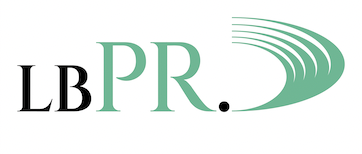The Art of Proofing
As a magazine editor for many years, I developed a good eye for errors.
Whether they were made by me or my team (often) or our many contributors, it was our job to put them right before any undoable printing took place. Even the PR agents we worked with on a daily basis weren’t immune. I have a great ‘PR Hall of Fame’ document somewhere, with years of collected press release howlers - but that’s another story.
‘Intersted in our services?’ Er . . . no.
As an editor, the common errors you find range from a simple typo (keying a wrong letter or missing one completely - we all do it, all the time!), to a misspelling (this could itself be down to a typo, or a small ‘brain-fart’, or - very common, this - just not knowing how to spell). Or you might find entirely the wrong word because somebody ‘was sure it meant that!’. Then there are grammatical errors - subjects and verbs, plurals, tenses, articles and so on – not to mention punctuation (bless those Greengrocer’s and their Apostrophe’s!*) to look out for.
“It makes sense: in evolutionary terms, the correct spelling of ‘predator’ is irrelevant - only the meaning counts.”
The tricky thing is, your brain is very good at reading, so much so that it just gets on with it whether you’re paying attention or not. Left to its own ingenious devices, your brain glosses over errors and other ‘obstacles’ that might get in the way of understanding.
Effectively, it often sees what it expects to see, rather than what is there on the page. We’ve all seen those tests on social media where we can read a passage of writing in which most of the letters of each word are jumbled up. It makes evolutionary sense: the correct spelling of ‘predator’ is irrelevant - only the meaning counts.
So, if your attention wanders when you’re ‘proof-reading’, your brain will be absolutely fine with just about everything. For that reason, I’ve always thought the term ‘proof-reading’ to be a bit misleading: if you’re properly ‘proofing’ you aren’t just ‘reading’ - you’re focusing on, and studying, in isolation, the shape and composition of every word, looking for abnormalities which might indicate typos or spelling mistakes.
At the same time, you’re absorbing the structure of the sentences, checking for grammatical errors and keeping track of meaning. You’re also monitoring consistency of style and usage, so that if, for example, you read “150kg” on one page and “150 kg” three pages later, you’ll spot the difference.
Successful proofing takes steady concentration. It has to be done consciously, not on automatic pilot. And while it would be nice to think it could all be done by a skilled expert in one go, the fact is it takes a good few run-throughs to be sure. Or as sure as you’re going to get, anyway. The occasional typo will get past even the best-trained eyes - especially if it’s something you’ve written yourself and you’ve been staring at it for hours.
A big part of what I do is checking through my writing - again and again. If you have a chance to get a fresh pair of eyes to look through whatever it is you’ve written, take it. Fresh eyes are invaluable: you’ll be amazed at what you could have missed. And when that written work is intended for your business’s stakeholders and future customers, it’s important to get it as right as you can - because they’ll be looking with fresh eyes.
*deliberate mistakes

